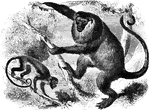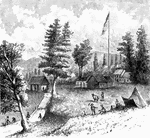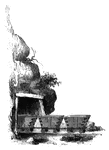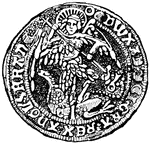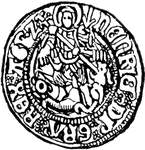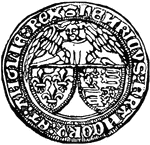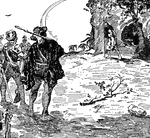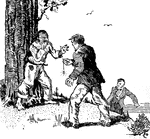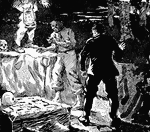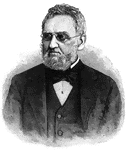
William Jewett Tenney
Born in Newport, Rhode Island in 1814; died in Newark, N.J., Spet. 20, 1883. Completed Benton's "Abridgment…
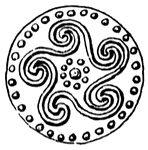
Peruvian Gold Disk
Peruvian gold disk sketched in the American Museum of Natural History in New York.
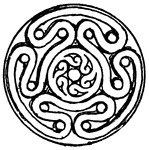
Mycenaean Decoration
Mycenaean "button"--a thin plate of gold stamped with a peculiarly Mycenaean motive of a band winding…

Siege of Vicksburg
"Siege of Vicksburg. Life in the trenches- bivouac of Leggett's Brigade- McPherson's Corps at the White…
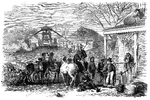
Bummers
"Sherman's 'Bummers' foraging in South Carolina. Our artist sent us with this sketch of 'Bummers Foraging'…
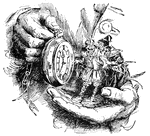
Pocketwatch
Gulliver shows the Lilliputians his gold pocketwatch. Never seeing anything like it before they believed…
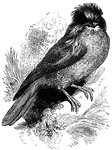
Gold River Goat-Sucker
A large bird, averaging about twenty inches in length when full-grown. It is native to Australia.
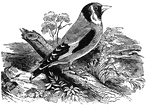
Common Goldfinch of Europe
Also known as the thistle-finch, it is often kept as a pet and taught to do tricks.
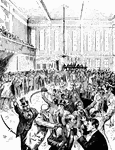
Black Friday
"The New York Gold Room on 'Black Friday,' September 24, 1869."—E. Benjamin Andrews 1895

Chambers
Appearance of the chambers. The miners, when they branch off from the main shaft or avenue, leave pillars…

Order of the Cincinnati
"Order of the Cincinnati. This was drawn from an original in the possession of Edward Phalon, Esq.,…
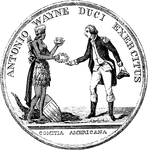
Wayne Medal Front
"Gold medal awarded by Congress to General Wayne. This is a representation of the medal, the size of…
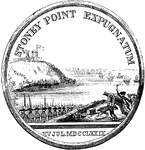
Wayne Medal Back
"Gold medal awarded by Congress to General Wayne. This is a representation of the medal, the size of…
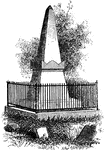
Van Wart's Monument
"Van Wart's monument. The following are the inscriptions upon this monument: North Side: 'Here repose…

Gold carp
"The Gold Carp, C. auratus, often called the Gold-fish and silver-fish, as it assumes both…

Morgan Medal Front
"Gold medal awarded to Morgan. The following are the devices and inscriptions upon the front of the…
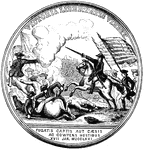
Morgan Medal Back
"Gold medal awarded to Morgan. The following are the devices and inscriptions upon the back of the medal:…
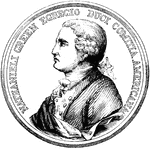
Greene Medal Front
"Gold medal awarded to Greene. This is a representation of the front side of the medal, the full size…
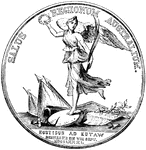
Greene Medal Back
"Gold medal awarded to Greene. This is a representation of the back side of the medal, the full size…
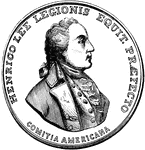
Lee Medal Front
"Medal awarded to Lee. On the twenty second of September, Congress honored Lee with a vote of thanks,…

Lee Medal Back
"Medal awarded to Lee. On the twenty second of September, Congress honored Lee with a vote of thanks,…
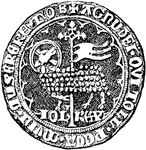
Agnel
"Agnel of John II., King of France. Agnel- A French gold coin bearing a figure of the paschal lamb,…
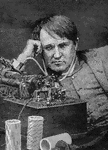
Thomas Alva Edison
"Thomas Alva Edison was born at Milan, Ohio, February 11, 1847, but the family soon after moved to Port…
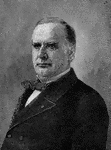
William McKinley
"In the general election of 1896, the principal question at issue was the financial policy of the country.…
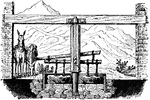
Arrastre
"Mexican Arrastre. A rude apparatus used in Mexico, and to some extent in the United States, for grinding…
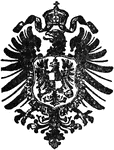
German Eagle
"The Eagle is an emblem in heraldry, war, and legend. The eagle, borne upon a spear, was used by the…
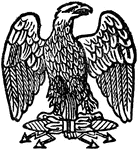
French Eagle
"The Eagle is an emblem in heraldry, war, and legend. The eagle, borne upon a spear, was used by the…
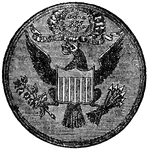
Eagle on Seal of United States
"The Eagle is a gold coin of the United States, value $10; half-eagle, $5; quarter-eagle, $2.50, double…

Torque
"A Torque, in archæology, is a twisted collar of gold, or other metal, worn around the neck, in…

Broken Radius
"When a bone is broken, blood trickles out between the injured parts, and afterwards gives place to…
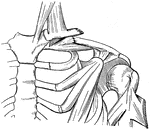
Broken Clavicle
"When a bone is broken, blood trickles out between the incjured parts, and afterwards gives place to…

Broken Tibia
"When a bone is broken, blood trickles out between the injured parts, and afterwards gives place to…

Augustal
"An italian gold coin, weighing from 30 to 40 grains, issued in the thirteenth century by emperor Frederick…
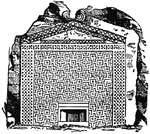
Tomb of Midas
"Midas was, in Greek legend, a King of Phrygia. For his kindness to Silenus he was promised by Dionysus…

Abacus
An abacus is denoted primarily a square tablet of any description, and was hence employed in the following…

Amphorae
"A vessel used for holding wine, oil, honey. The following cut represents amphorae in the British Museum.…

Aurum
"Gold appears not to have been coined at Athens till the time of the Macedonian empire, with the exception…
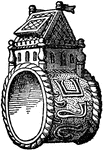
Ring
"A Ring is any circle or section of a cylinder. Rings of gold, silver, and of other metals and materials…

Ring
"A Ring is any circle or section of a cylinder. Rings of gold, silver, and of other metals and materials…
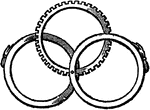
Ring
"A Ring is any circle or section of a cylinder. Rings of gold, silver, and of other metals and materials…

Fibula
"A brooch, consisting of a pin, and of a curved portion furnished with a hook. The curved portion was…

Bust of Thucydides
"Thucydides, the greatest of the Greek historians, was an Athenian, and was born in the year 471 B.C.…

Gallic Torques
Gallic Torques were heavy necklaces of braided metal. Gauls carried their wealth in the form of Gold…
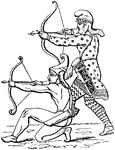
Phaetra
"A quiver, was principally made of hide or leather, and was adorned with gold, painting, and braiding.…
Pyxis
"A casket, a jewel-box. Quintilian produces this term as an example of catachresis, because it properly…

Reticulum
"A caul or coif of network for covering the hair, worn by women during the day as well as the night.…

Chaise
The front of a French gold coin first issued by Louis IX. in the thirteenth century. It was equal to…

Chaise
The rear of a French gold coin first issued by Louis IX. in the thirteenth century. It was equal to…


